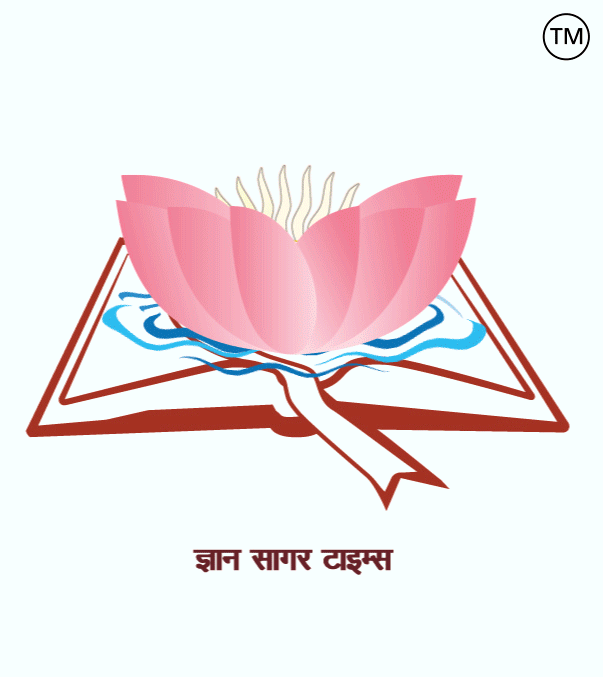
धनिया…
भारतीय रसोई में प्रयोग की जाने वाली एक सुगंधित छोटे, हरे और पंखदार पत्ते व बीज का प्रयोग दुनिया भर के व्यंजनों और औषधीय प्रयोजनों के लिए किया जाता रहा है. धनिया जिसे अंग्रेजी में Coriander कहा जाता है. इसका वैज्ञानिक नाम कोरिएंड्रम सैटिवम है वहीं, मराठी में कोथमीर, हिंदी में धनिया पत्ती, तमिल में कोथामल्ली भी कहा जाता है. धनिया के पत्ते छोटे, हरे और पंखदार होते हैं. उनका स्वाद हल्का, ताज़ा और थोड़ा खट्टा होता है.
धनिया की खेती मुख्य रूप से भारत, पाकिस्तान, बांग्लादेश और अन्य देशों में की जाती है. इसकी खेती के लिए शीतोष्ण और शुष्क जलवायु उपयुक्त होती है. बीज अंकुरण के लिए 20-25°C और पौधों की वृद्धि के लिए 25-30°C आदर्श तापमान होता है. धनिया की खेती करने के लिए बलुई दोमट या दोमट मिट्टी सबसे उपयुक्त मानी जाती है. धनिया की खेती वर्ष में दो बार की जाती है.
धनिया के पत्तों का उपयोग अक्सर भोजन को सजाने और स्वाद जोड़ने के लिए किया जाता है. वहीं , धनिया के बीज छोटे, गोल और भूरे रंग के होते हैं. उनका स्वाद गर्म, मसालेदार और थोड़ा खट्टा होता है. धनिया के बीजों का उपयोग अक्सर मसाले के रूप में किया जाता है. धनिया के कच्चे पत्तों में विटामिन A, C और K के गुण मौजूद है और इसके बीज में – फाइबर, कैल्शियम, कॉपर, आयरन पाया जाता है.
हरा धनिया पेट की समस्याओं जैसे अपच, गैस और एसिडिटी को कम करने में मदद करता है. यह पाचन एंजाइम को सक्रिय करता है और भूख बढ़ाने में सहायक है. इसमें एंटीऑक्सीडेंट होते हैं जो शरीर से विषैले तत्वों (toxins) को बाहर निकालने में मदद करते हैं. यह किडनी और लिवर की सफाई में सहायक होता है. हरा धनिया ब्लड शुगर को नियंत्रित करने में मदद करता है, जिससे डायबिटीज के मरीजों को फायदा हो सकता है. यह इंसुलिन संवेदनशीलता को बढ़ाने में सहायक होता है.
हरा धनिया में विटामिन C और एंटीऑक्सीडेंट होते हैं, जो त्वचा को चमकदार और बालों को मजबूत बनाते हैं. इसे पेस्ट बनाकर चेहरे पर लगाने से मुंहासे और दाग-धब्बे कम होते हैं. इसमें विटामिन A, C और के होते हैं, जो शरीर की रोग प्रतिरोधक क्षमता (इम्यूनिटी) को मजबूत बनाते हैं साथ ही संक्रमण और सर्दी-खांसी से बचाव करता है. धनिया कोलेस्ट्रॉल को कम करने में मदद करता है, जिससे हृदय रोग का खतरा कम होता है. यह ब्लड प्रेशर को भी नियंत्रित करता है. इसमें एंटी-इंफ्लेमेटरी गुण होते हैं, जो गठिया (arthritis) और जोड़ों के दर्द में राहत देते हैं.
वहीं, धनिया बीज में फाइबर और एंटीऑक्सीडेंट होते हैं, जो पाचन में सुधार करते हैं. गैस, अपच और पेट दर्द को कम करने में सहायक होता है. पेट की सूजन को दूर करने के लिए धनिया का पानी पीना फायदेमंद होता है. धनिया के बीज ब्लड शुगर को नियंत्रित करने में मदद करता है. यह मेटाबॉलिज्म को तेज करता है, जिससे वजन कम करने में सहायता मिलती है. इसमें एंटीऑक्सीडेंट्स होते हैं जो शरीर की सफाई करने में मदद करते हैं. धनिया बीज का पानी पीने से शरीर से विषैले पदार्थ बाहर निकलते हैं. धनिया बीज कोलेस्ट्रॉल को नियंत्रित करता है और खराब कोलेस्ट्रॉल (LDL) को कम करता है.
धनिया बीज का पानी पीने से त्वचा पर निखार आता है और मुंहासे कम होते हैं. यह बालों के झड़ने को रोकने और उन्हें मजबूत बनाने में सहायक होता है. धनिया बीज पानी पीने से हार्मोन बैलेंस करने में सहायता मिलती है साथ ही महिलाओं में अनियमित मासिक धर्म की समस्या को ठीक करने में मदद करता है.
कुछ लोगों को हरे धनिया से एलर्जी हो सकती है, जिससे त्वचा पर लाल धब्बे, खुजली या सूजन हो सकती है. धनिया रक्तचाप को कम करने में सहायक होता है, लेकिन अधिक मात्रा में सेवन करने से बीपी बहुत कम हो सकता है, जिससे चक्कर या कमजोरी आ सकती है. खासकर लो ब्लड प्रेशर वाले लोगों को इसका सीमित सेवन करना चाहिए. हरा धनिया लिवर को डिटॉक्स करता है, लेकिन अधिक सेवन करने से लिवर एंजाइम असंतुलित हो सकते हैं, जिससे लिवर पर दबाव पड़ सकता है.गर्भावस्था में अधिक धनिया का सेवन हार्मोनल असंतुलन कर सकता है और गर्भाशय पर प्रभाव डाल सकता है.
डायबिटीज के मरीजों को हरे धनिया का अधिक सेवन नहीं करना चाहिए, क्योंकि यह ब्लड शुगर को बहुत कम कर सकता है. अधिक मात्रा में सेवन करने से पेट दर्द, दस्त और मतली हो सकती है.
नोट: – धनिया खाने के बाद अगर खुजली, सूजन या सांस लेने में परेशानी हो तो तुरंत डॉक्टर से संपर्क करें.
========== ========= ===========
Coriander…

Coriander, an aromatic herb with small, green, and feathery leaves and seeds, is used in Indian kitchens and for dishes and medicinal purposes around the world. It is called Coriander in English, but its scientific name is Coriandrum sativum. It is also called Kothmir in Marathi, Dhaniya Patti in Hindi, and Kothamalli in Tamil. Coriander leaves are small, green, and feathery. Their taste is mild, fresh, and slightly sour.
Coriander is mainly cultivated in India, Pakistan, Bangladesh, and other countries. It is suitable for cultivation in a temperate and dry climate. 20-25°C is the ideal temperature for seed germination and 25-30°C for plant growth. Sandy loam or loamy soil is considered most suitable for cultivating coriander. Coriander is cultivated twice a year.
Coriander leaves are often used to decorate food and add flavour. At the same time, coriander seeds are small, round and brown. Their taste is hot, spicy and slightly sour. Coriander seeds are often used as a spice. Raw coriander leaves contain the properties of vitamins A, C and K and its seeds contain fibre, calcium, copper, and iron.
Green coriander helps in reducing stomach problems like indigestion, gas and acidity. It activates digestive enzymes and is helpful in increasing appetite. It contains antioxidants that help in flushing out toxins from the body. It helps in cleaning the kidneys and liver. Green coriander helps in controlling blood sugar, which can benefit diabetic patients. It helps in increasing insulin sensitivity.
Green coriander contains vitamin C and antioxidants, which make the skin shiny and the hair strong. Making a paste of it and applying it to the face reduces acne and blemishes. It contains vitamins A, C and K, which strengthen the body’s immunity and also protect against infections and colds. Coriander helps in reducing cholesterol, which reduces the risk of heart disease. It also controls blood pressure. It has anti-inflammatory properties, which provide relief in arthritis and joint pain.
At the same time, coriander seeds contain fiber and antioxidants, which improve digestion. It helps reduce gas, indigestion and stomach pain. Drinking coriander water is beneficial in relieving stomach inflammation. Coriander seeds help in controlling blood sugar. It speeds up metabolism, which helps in reducing weight. It contains antioxidants that help in cleansing the body. Drinking coriander seed water removes toxins from the body. Coriander seeds control cholesterol and reduce bad cholesterol (LDL).
Drinking coriander seed water brightens the skin and reduces acne. It helps prevent hair fall and makes them stronger. Drinking coriander seed water helps in balancing hormones and also helps in curing the problem of irregular menstruation in women.
Some people may be allergic to green coriander, which can cause red spots, itching or swelling on the skin. Coriander helps reduce blood pressure, but consuming it in excess can reduce BP very much, which can cause dizziness or weakness. Especially people with low blood pressure should consume it in limited quantities. Green coriander detoxifies the liver, but consuming it in excess can imbalance the liver enzymes, which can put pressure on the liver. Consuming too much coriander during pregnancy can cause hormonal imbalance and affect the uterus.
Diabetic patients should not consume too much green coriander, as it can reduce blood sugar very much. Consuming it in excess can cause stomach pain, diarrhoea and nausea.
Note: – If there is itching, swelling or difficulty in breathing after eating coriander, contact the doctor immediately.





